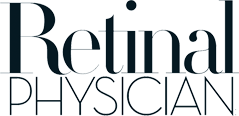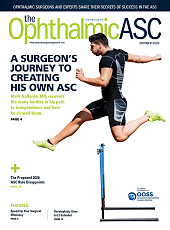The following transcript has been edited for clarity:
Hi, this is Diana V. Do, MD, at the Retinal Physician video channel. Today I’m joined by Christina Y. Weng, MD, MBA. Thanks for coming, Christina.
Dr. Weng: Thank you for having me, Diana.
Dr. Do: It's exciting at the American Academy of Ophthalmology (AAO) retina subspecialty day, you’re giving an update on ergonomics and the vitreoretinal surgeon. What are the key take-home points?
Dr. Weng: Thanks for the chance to talk with Retinal Physician. I always love all of the video interviews that you do. This is a little bit of a departure of a topic for me, but it is so important for us as retina specialists because we are disproportionately affected by ergonomic issues as ophthalmologists, but particularly as retina specialists. And we know that because the Academy actually conducted a survey years ago and found that over half of ophthalmologists had issues with their neck, back, or upper body. And then the ASRS turned around and also did a survey and found that 85% of retina specialists were affected. So it absolutely is really important. Think about what we do as retina specialists on a daily basis. We’re always contorting our bodies in the strangest ways, and we see high volumes of patients. All of that is kind of the perfect recipe for injury, unfortunately.
So, my talk really focuses on ways that we can incorporate small changes but very meaningful changes in our day-to-day environments to improve our ergonomic settings so that we can hopefully protect our bodies for our entire career. Those changes can be the smallest things, Diana. For example, having the patients head all the way up at the top of the bed in the operating room. Making sure that your foot pedals are placed so that your feet, knees, and hips are symmetrical without twisting your spine. I always like to envision sort of dangling from a string coming out from the top of my head—that's how your neck and back should be aligned.
In the office setting it’s just as important, because we all spend so much time in front of screens and in our clinics doing injections and seeing patients all day. It can be things like investing in a high-quality chair with lumbar support, making sure that when you're performing indirect ophthalmoscopy that you're not contorting your bodies as much as you need to. Making sure you move around the head of the patient—move the patient’s head to fit you, instead of the other way around.
Even in the car—you don't think of the car as a workplace, but a lot of us travel to satellites now, that's really become an extension of our workplaces. Making sure that your driver's seat is in good position, that you have lumbar support, that your hands are on appropriate areas of the steering wheel. And making sure that when you’re using devices and cell phones, like we all do too much, that you're trying to elevate as much as possible to avoid what they call “text neck” or “tech neck.” All of these little things can contribute to important, career-saving changes that we should all be enacting on a daily basis.
I'll draw the viewer's attention to a paper that we published a few years ago in OSLI Retina that has a lot of great diagrams of ways that you can make some small corrections in your day-to-day clinics, offices, ORs, and even in your car settings. Hopefully, everyone will find those helpful.1
Dr. Do: This is such an important topic and thank you for bringing it all to our attention. Thanks again for joining Retinal Physician.
Dr. Weng: Thanks for having me. RP
Reference
1. Weng CY, Hariprasad SM, Leiderman YI. Ergonomics in retina. Ophthalmic Surg Lasers Imaging Retina. 2019;50(9):537-542. doi:10.3928/23258160-20190905-01








